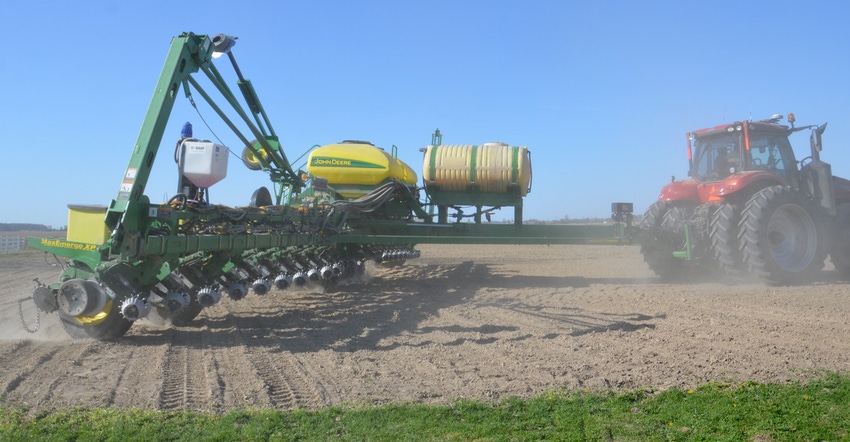May 4, 2020

As we move into another crop year, it is prudent to review custom rates and their components. This article will briefly discuss the components included in custom rates and provide a link to the most recent estimates of custom rates in Indiana.
Expense items typically incorporated into custom rate charges include fuel, lubrication, repairs, insurance, labor, and depreciation and interest. The largest component of custom rate charges is typically depreciation and interest.
Depreciation results from wear, obsolescence and machine age. Economic depreciation rather than tax depreciation should be used. Depreciation for tax purposes is often accelerated compared to economic depreciation. To compute economic depreciation, information pertaining to economic useful life, list price and salvage value are needed. Economic useful life is not necessarily the same as service life. Many farms trade machines before they’re completely worn out. Salvage value is an estimate of the sale value of the machine at the end of the useful life. Interest should be included in expense items, regardless of whether debt is incurred when purchasing the tractor or machine. Interest represents the opportunity cost associated with using scarce funds to purchase a tractor or machine. Expense items used to compute custom charges are typically recorded on an hourly basis and then converted to a per-acre basis using the number of acres that can be covered per hour. For example, you can arrive at a per hour cost for planting corn, and then convert it to a per-acre charge based on the number of acres you can plant per hour.
Adjusting custom rates
If any of these expense items are excluded, these items should be subtracted from the custom charge that includes all items. That provides a custom charge that excludes particular expense items. For example, let’s assume that the custom charge for planting corn is $17.50 per acre. If you’re providing the planter but the farmer provides the tractor and labor, the expenses related to these items would need to be subtracted from this amount to obtain a custom charge just for the planter that excludes tractor expenses — including repairs, fuel, lubricants, insurance, and depreciation and interest.
The latest custom rates for Indiana are available now. Tables contain information on land preparation operations, fertilizer and chemical application, and planting and harvesting. The information was updated in 2019 based on a statewide survey. Data include the number of farmers reporting for each operation, the range of responses reported and the average rate.
Remember, custom rates include fuel, lubrication, repairs, insurance labor, and depreciation and interest on the tractor and machinery used in the operation. If any of these items aren’t included in the operation, they would need to be subtracted from the published custom rate. More information pertaining to related topics can be found on the Purdue Center for Commercial Agriculture website.
Langemeier is a Purdue University Extension ag economist and associate director of the Purdue Center for Commercial Agriculture. He writes from West Lafayette, Ind.
About the Author(s)
You May Also Like






